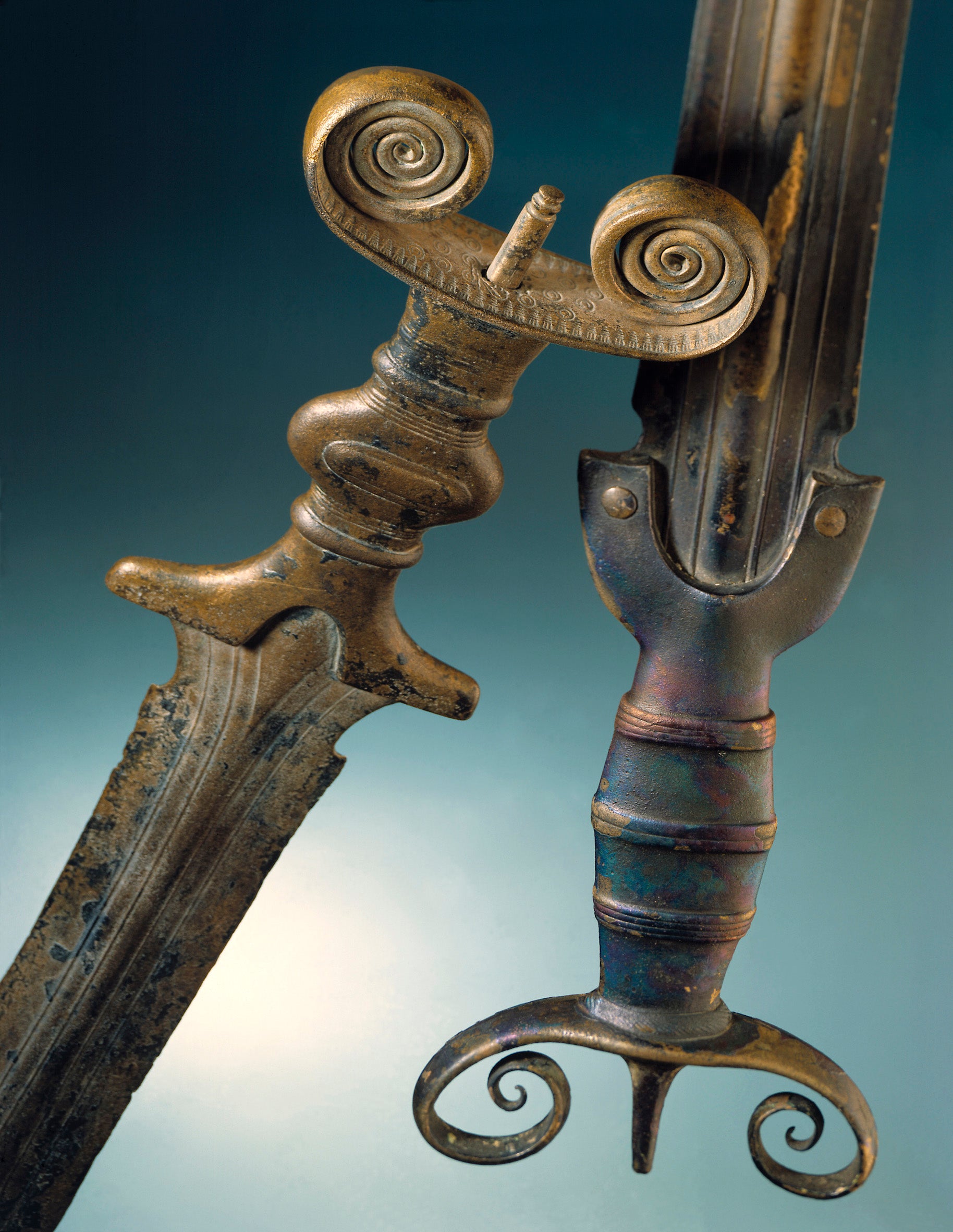Votre panier est vide


Long before iron and steel swords were invented, bronze was used to forge these bladed weapons. Bronze was actually the only metal used to forge swords and other bladed weapons for several centuries. It wasn't until the advent of iron that bladesmiths began forging iron and steel swords. In this post, we're going to take a look at the history and origins of the bronze sword, revealing when and where it was invented as well its significance in shaping the modern-day steel sword.
The Bronze Age
During the 17th century B.C. Bronze Age, some of the world's first bronze swords were invented in the Black Sea and Aegean regions. At about 39 inches (100 cm) long, they weren't particularly big. Rather, they more comparable to daggers than actual modern-day swords like the katana or wakizashi. But these early bronze swords proved instrumental in revealing a new method for producing bladed weapons. Instead of shaping stone to create swords, civilizations in the Black Sea and Aegean regions were able to create swords by casting them in bronze.
Chinese Bronze Swords
Although bronze swords first appeared in Black Sea and Aegean regions during the 17th century B.C., the craft eventually made its way to China. When China was ruled and governed by the Shang dynasty (2 B.C.), bladesmiths here began to make swords and bladed weapons using bronze. However, it's important to note that these early-model Chinese bronze swords differed in their composition from their counterparts made in other regions of the world.
Specifically, Chinese bronze swords contained a higher tin content. It wasn't uncommon for a Chinese bronze sword to contain up to 20% tin. The use of a high tin content allowed for a stronger blade, though it also made the blade more susceptible to breakage upon impact. This is why other civilizations preferred a lower tin content -- usually around 10% -- in their swords.
European Bronze Swords
Bronze swords became particularly popular during the European Bronze Age. The Naue II, also known as the grip-tongue sword, first appeared in Northern Italy around the 13th century B.C. And for hundreds of years, it remained one of the region's most popular swords. The Naue II was a relatively small double-edged sword. According to Wikipedia, they were forged with an emphasis on both functionality and aesthetics. Several archeological specimens show the Naue II with ornate decorations and intricate details that aren't found in many other swords.